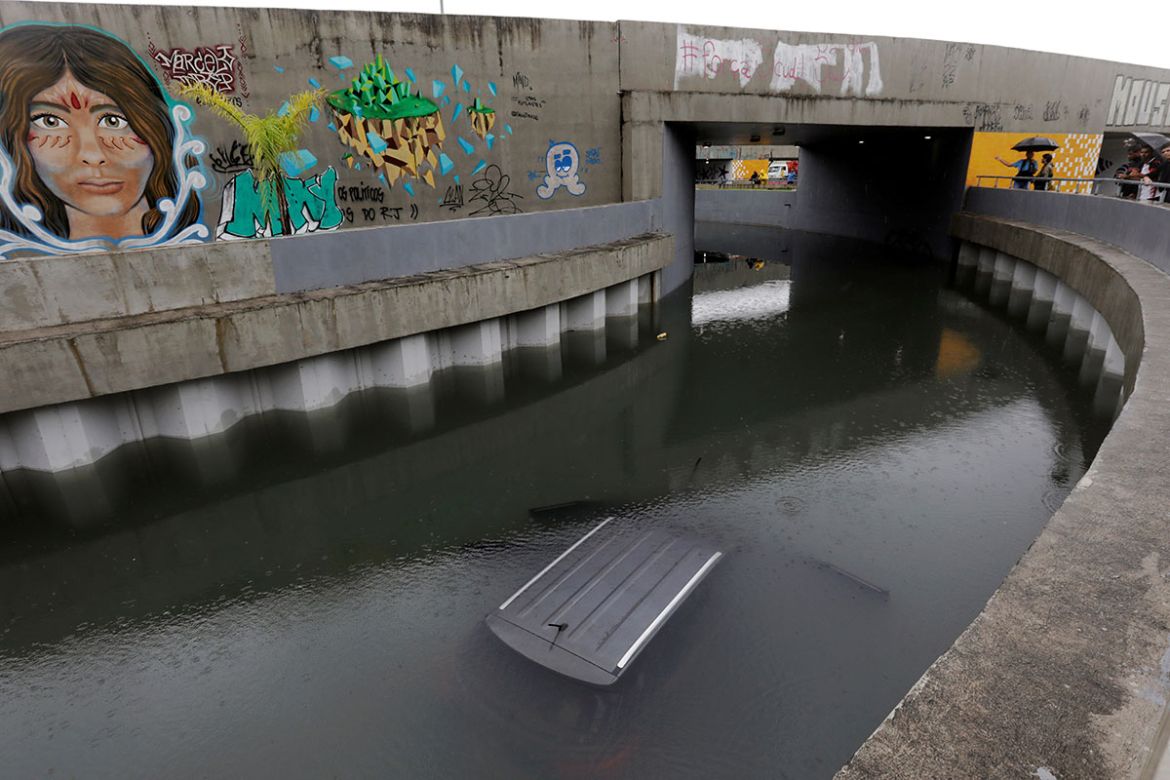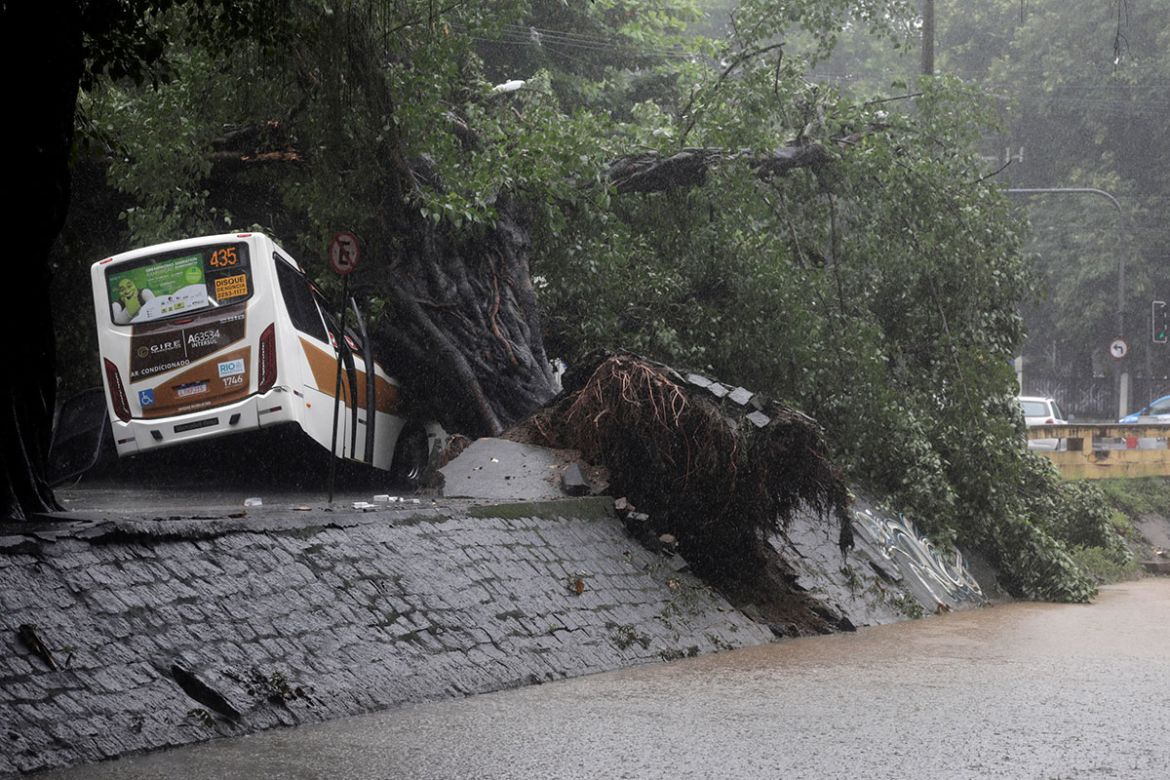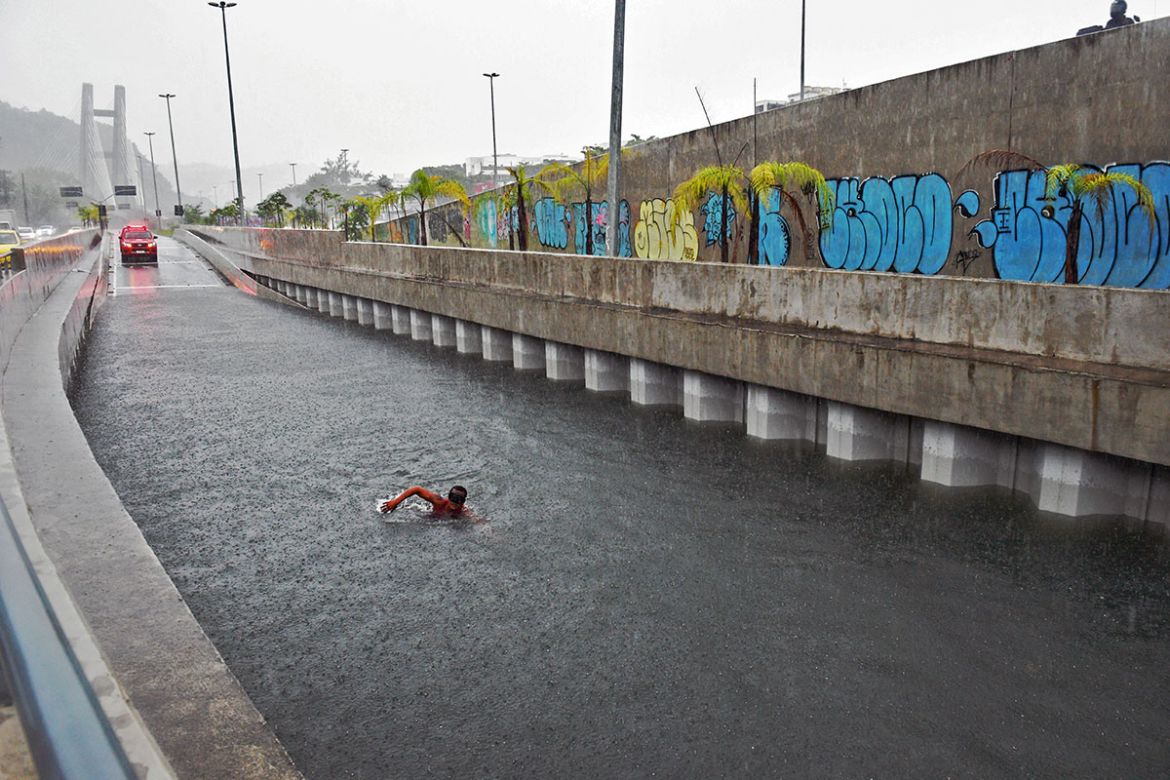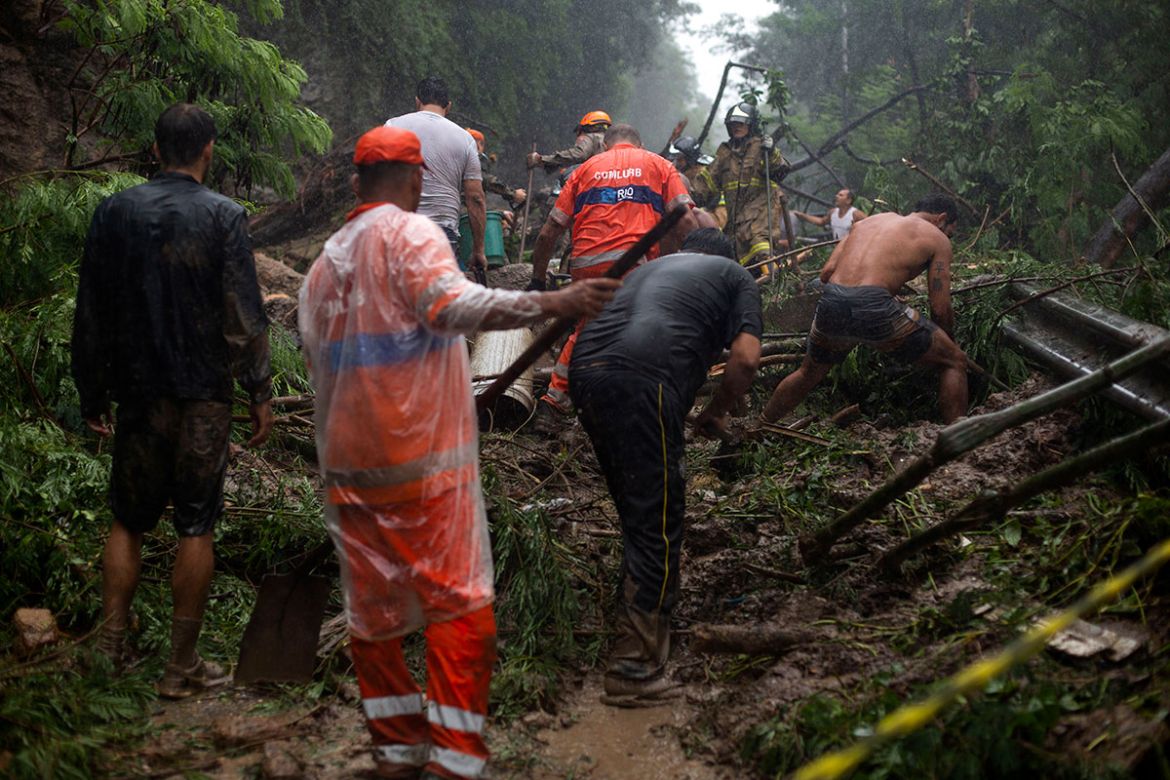In Pictures
Rio de Janeiro floods: death toll climbs to 10
Torrential rains turned streets into rivers, downed trees and caused massive mudslides in the Brazilian city.

Flooding in Rio de Janeiro killed at least 10 people according to the city’s fire department, as a clean-up operation continued across the city on Wednesday.
A state of emergency was declared as the torrential rain triggered widespread flash flooding which turned streets into raging rivers, toppled trees and swept away cars.
Schools were closed and people urged to avoid non-essential traffic until further notice. There were power outages in some areas.
The bodies of three people were found in a car buried behind a shopping centre on Tuesday afternoon, while two women died when a house in a favela collapsed, the fire department said in a statement.
The other victims included a man who died after he was electrocuted in a house and another who was caught in a torrent of water.
The southern area of the city, which includes the tourist hot-spots Copacabana and Ipanema as well as several impoverished favela areas, were hardest hit.
A record 246 millimetres of rain fell in just nine hours on Monday night, way above the April average of 95mm.
While heavy rain often causes flash flooding in Rio de Janeiro, residents said they had not seen anything on this scale.
Mayor Marcelo Crivella said the downpour had been “totally atypical” but said unsafe building practices contributed to the scale of destruction.
“Many houses in Rio are built in areas that are inappropriate, in places where water flows. It’s a tragedy and we have tried to warn these people,” he said on local media.
Heavy runoff from neighbouring hills gushed through some apartment buildings and shops, leaving behind mud and debris.
Cars and buses were crushed by fallen trees, and sections of streets were ripped up by the force of the water.
The worst of the rain has now cleared away to the north of the city, but showers are expected to continue across the city over the next few days.



![Southern areas of the city, including some impoverished favelas were hardest hit. [Pilar Olivares/Reuters]](/wp-content/uploads/2019/04/1b8f793394ea43f79368102d088e2ebc_8.jpeg?fit=1170%2C782&quality=80)



